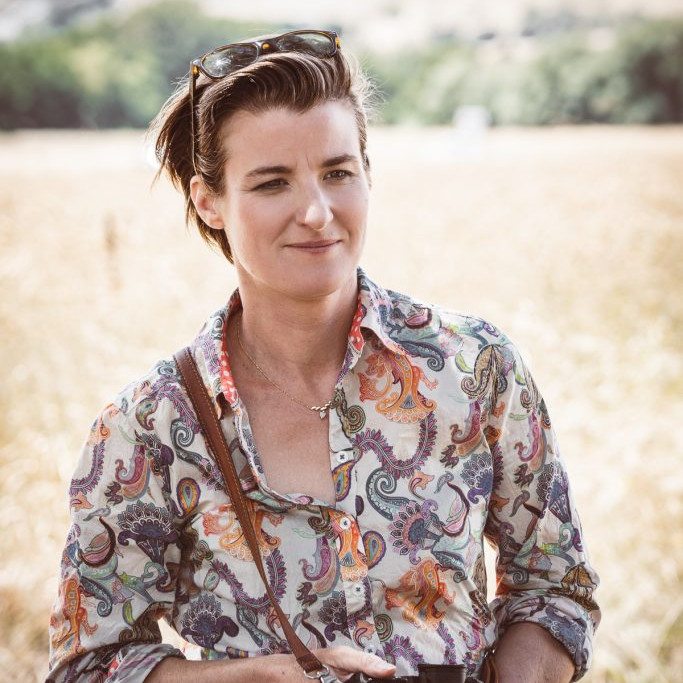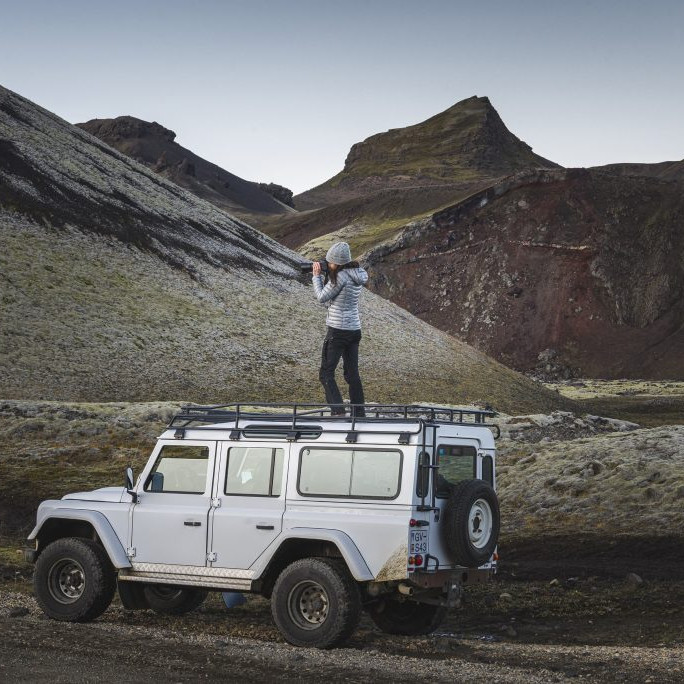Daniel Mainzer Photographer
Can we discuss your project ‘Rubber Industry Project’?
My rubber industry project which has produced a book and prints for exhibitions started with 10 years of documentary photography beginning with my hiring in 1976 as an in house photographer at Firestone , then General Tire. I felt compelled to tell the story of collapse in the tire industry and started with life in the plants and the actual destruction of the plants.
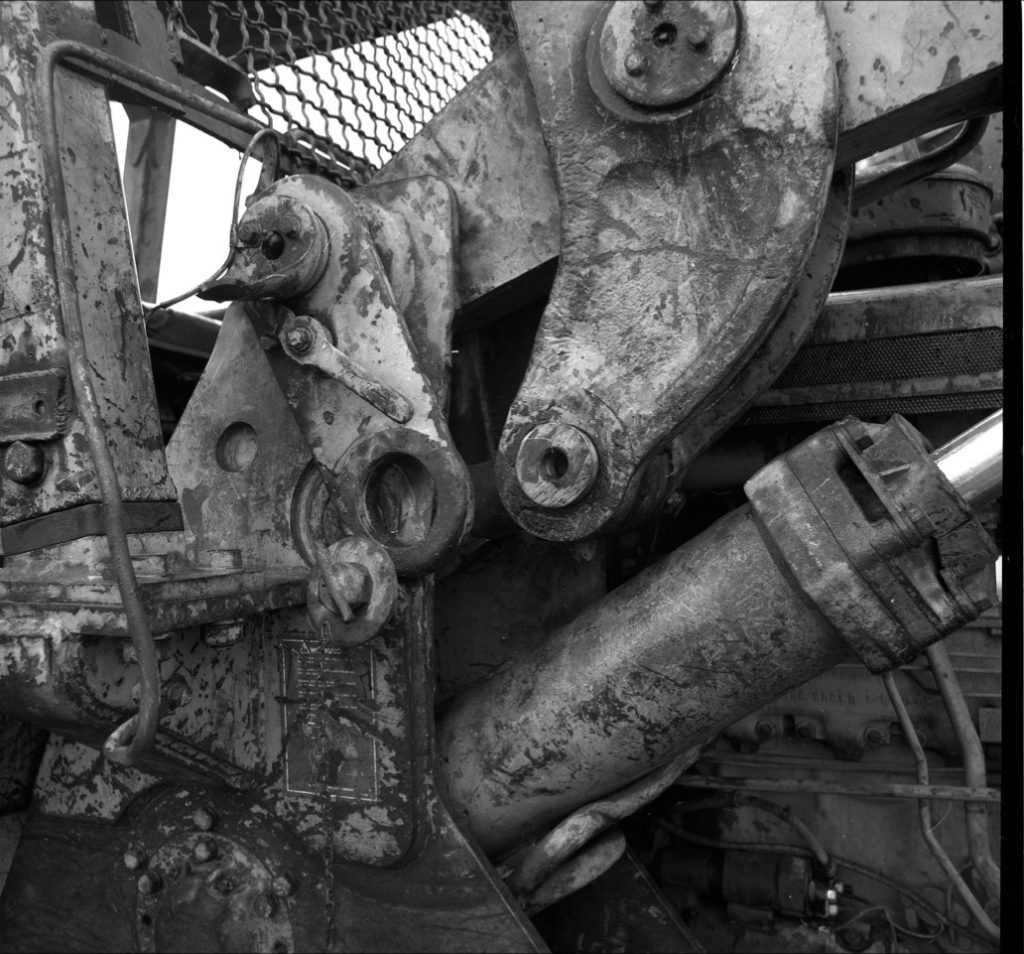
Dozer, 1980 firestone copyrite Daniel Mainzer
My first show of this work was in 2008 in the Massillon Museum of Art, initially for 45 days, but the show was extended for 3 months due to rising attendance every day. I received a Knight Foundation Grant in 2017 to write and publish a book of my work along with a full set of prints for exhibition and another set for the Akron Art Museum.

copyrite Daniel Mainzer
Everything was finished January 2020. The book has 35 photos, 7 pages of text and is being sold in the Art Museum, a local bookstore and by me online. The first show at Muskingum University happened in September 2019 and a major show at the University of Akron this summer has been postponed.
How long did the whole project take from beginning to publication?
I knew that telling the story had to be told with the portraits of the workers in the plants. This has always been my focus and strength as a photographer due to my repour with people. There is always a moment between the photographer and the subject of open welcoming communication. It is the moment to capture which makes a strong photo, much different from photographing work in production even though I always try to have someone in these photos for scale.
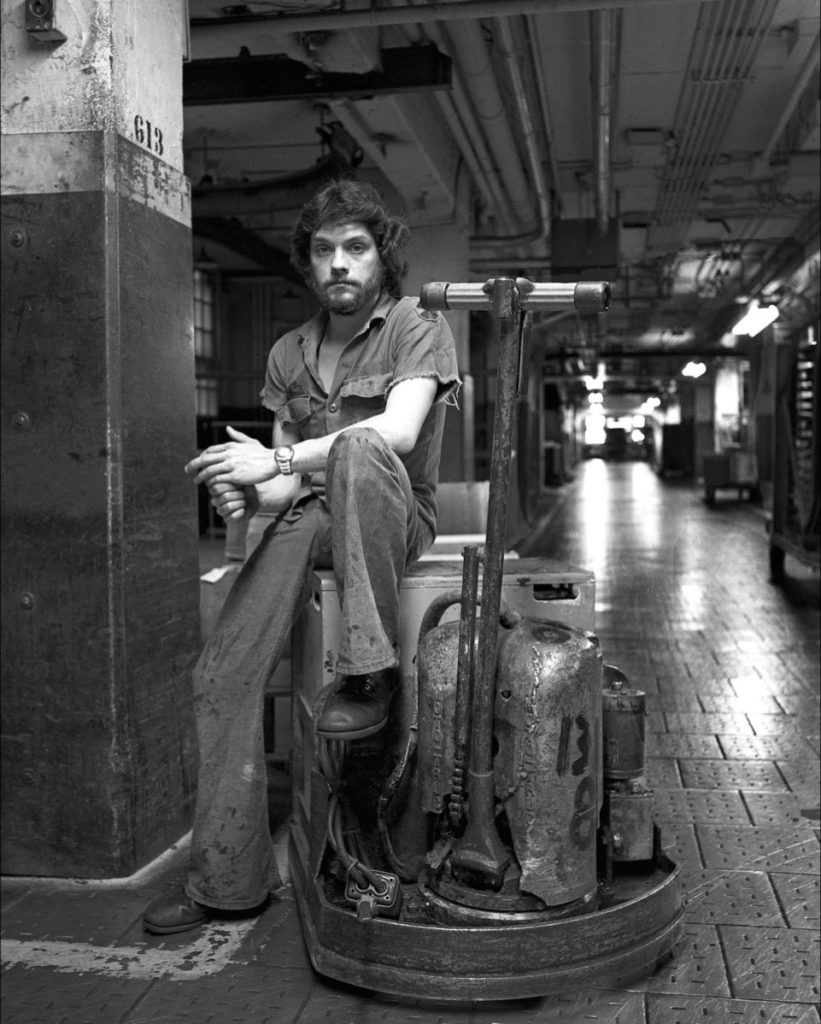
Firestone Pieta, copyrite Daniel Mainzer
Everyone relates to the human element in work and it best told in Black and White which requires the viewer to focus on the subject. It is more somber, more serious than color and has a classical beauty coming from the light itself as it falls on the subject. My subjects were very willing to be photographed and were highly amused that anyone would want to photograph them as they were in daily routines which were just what they had to do. Nothing much to them and as uninterested as could be. Not to me.
My boss in the photo studio had no objections to me going out to do this work as we were not that busy. Our work had declined to a fraction of what we did when I started in 1976. Then it was busy every minute and then some. By 1978, the decline had begun and was free to wander in the plants. I showed some of the early work to my boss and he could have cared less so I never bothered again. I was careful to use my own materials so I could maintain control of the work, especially after I was done working for the tire companies, an inevitable conclusion.
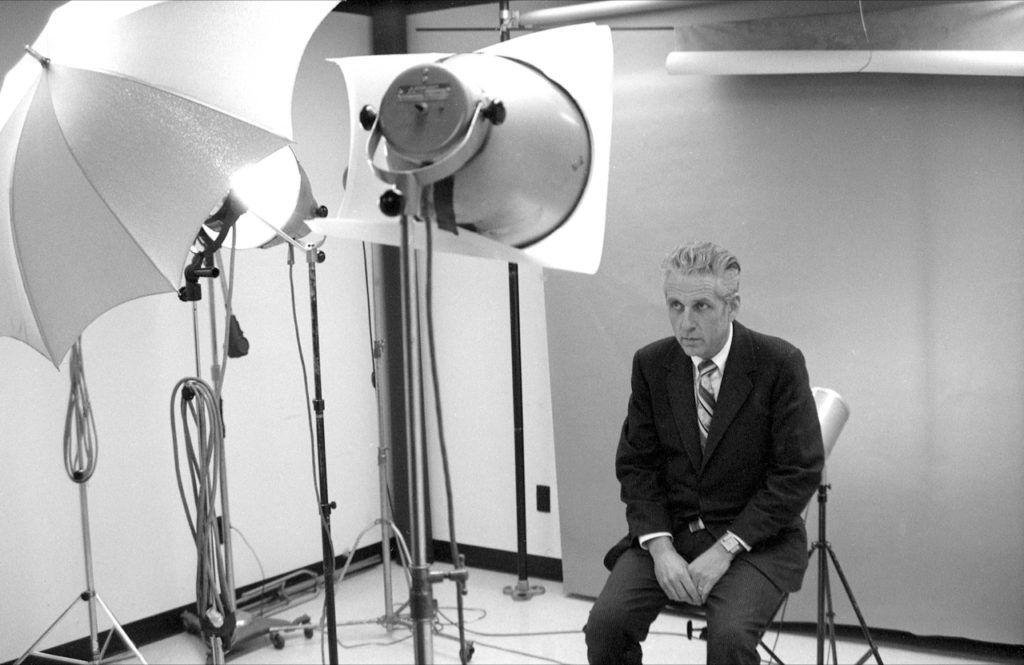
John Nevin, copyrite Daniel Mainzer
The work in the book ended in 1987, my last year as an in-house photographer at General Tire, but I never quit documenting the end of tire production in Akron as I have continued to work for the tire companies from my own studio since 1987. The last major photographic excursion was in 2016, a top to bottom documentation of Firestone’s empty plant 1, now owned by Bridgestone Tire. They do produce Indy car race tires there, but that is the only Bridgestone tire production in Akron. Goodyear also produces NASCAR race tires in Akron. There were many thousands of tire workers in Akron in the 70’s, but just several hundred now. I did photograph the empty Firestone Headquarters building in 2016, very eerie.

Plant 2 Firestone, looking east copyrite Daniel Mainzer
How many images did you finally use?
The book has 35 photos, 7 pages of text and is being sold in the Art Museum, a local bookstore and by me online. The first show at Muskingum University happened in September 2019 and a major show at the University of Akron this summer has been postponed due to Corona Virus.
Discuss the repour you needed to have with the workers for your images to be so deeply meaningful?
I knew that telling the story had to be told with the portraits of the workers in the plants .This has always been my focus and strength as a photographer due to my repour with people. There is always a moment between the photographer and the subject of open welcoming communication. It is the moment to capture which makes a strong photo, much different from photographing work in production even though I always try to have someone in these photos for scale.
Comment on the difference of photographing the machinery and machines in production?
Everyone relates to the human element in work and it best told in Black and White which requires the viewer to focus on the subject. It is more somber, more serious than colour and has a classical beauty coming from the light itself as it falls on the subject.
What was the reaction of :
Workers
My subjects were very willing to be photographed and were highly amused that anyone would want to photograph them as they were in daily routines which were just what they had to do. Nothing much to them and as uninterested as could be. Not to me.
Management
My boss in the photo studio had no objections to me going out to do this work as we were not that busy. Our work had declined to a fraction of what we did when I started in 1976. Then it was busy every minute and then some. By 1978, the decline had begun and was free to wander in the plants. I showed some of the early work to my boss and he could have cared less so I never bothered again. I was careful to use my own materials so I could maintain control of the work, especially after I was done working for the tire companies, an inevitable conclusion.
Your work is very masculine, discuss this is relations to cars and sport.
I wound up shooting automobile racing, mostly for the tire companies, because of my in housework doing this. Like all photographic specialties, there is much to learn and master about shooting racing, plus specialized equipment to do the best job.
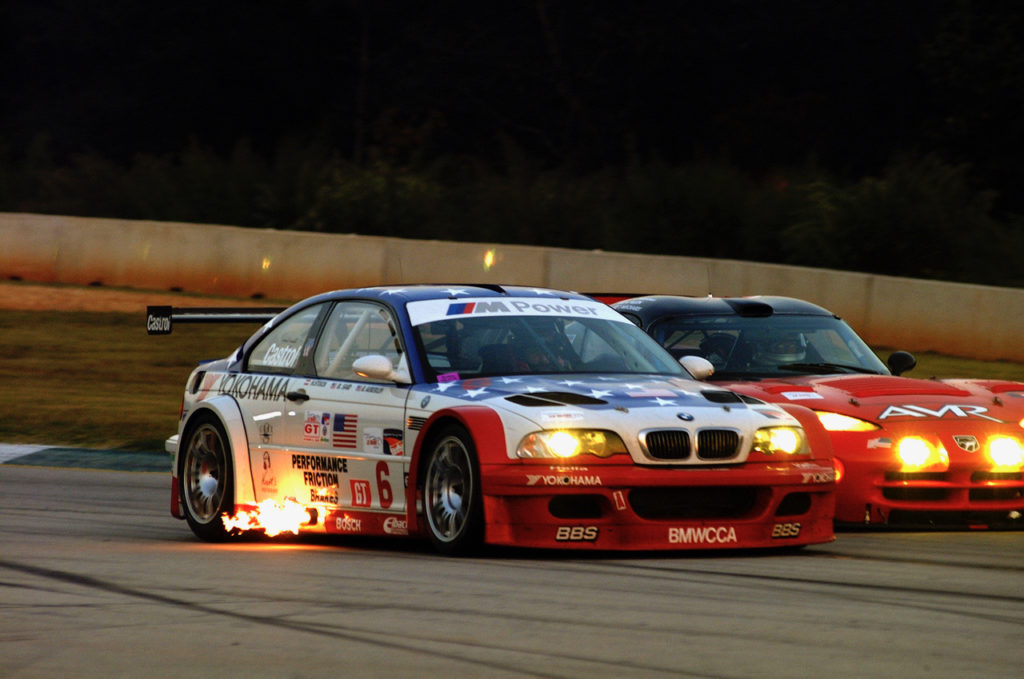
copyrite Daniel Mainzer
You need fast cameras, the best long lenses, technique and knowledge of race tracks and car characteristics. I still do a bit every year, even though I have mostly retired from shooting anything other than my own work.
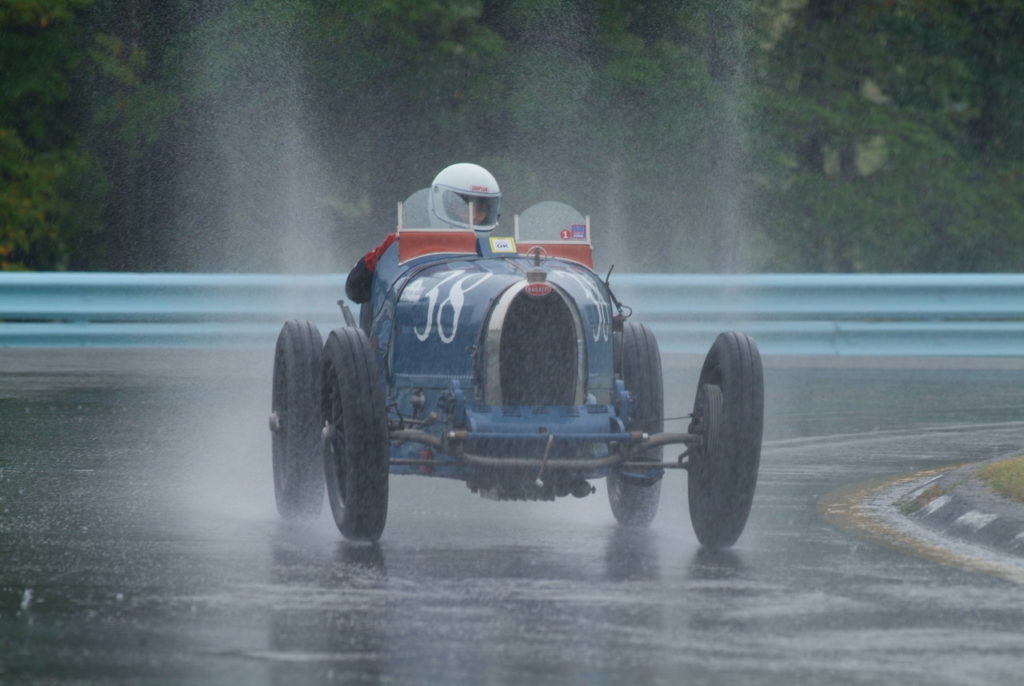
copyrite Daniel Mainzer
Discuss your aerial work and the techniques you have used.
There is always opportunity in every aspect of photography and while shooting racing, I saw that there were no aerials of the racetracks so I decided to shoot some.
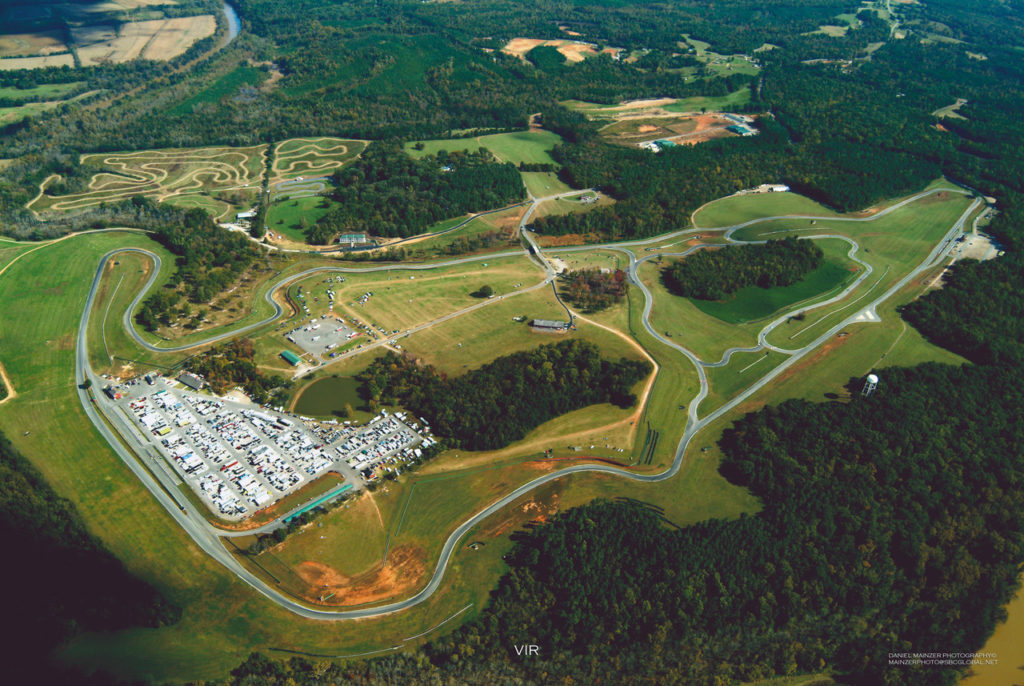
Virginia 2004, Copperplate, 20 x 30, copyrite Daniel Mainzer
Having done aerials for various companies, it was just a matter of picking out the right day and time. Aerials, like any branch of photography, require specialized knowledge to do a good job, the right cameras, film, now digital, filters, plane vs helicopter, a sense of what is the best angle and as always in any photography, using the light to best advantage. Today I see a lot of drones used for aerials and they seem to do OK, but the cameras are small and if one needs large prints, you need better cameras. Also, drones are limited by law to lower altitudes and would not be good for large subjects like golf courses. There is no one solution, technique or camera of all jobs and there never will be.
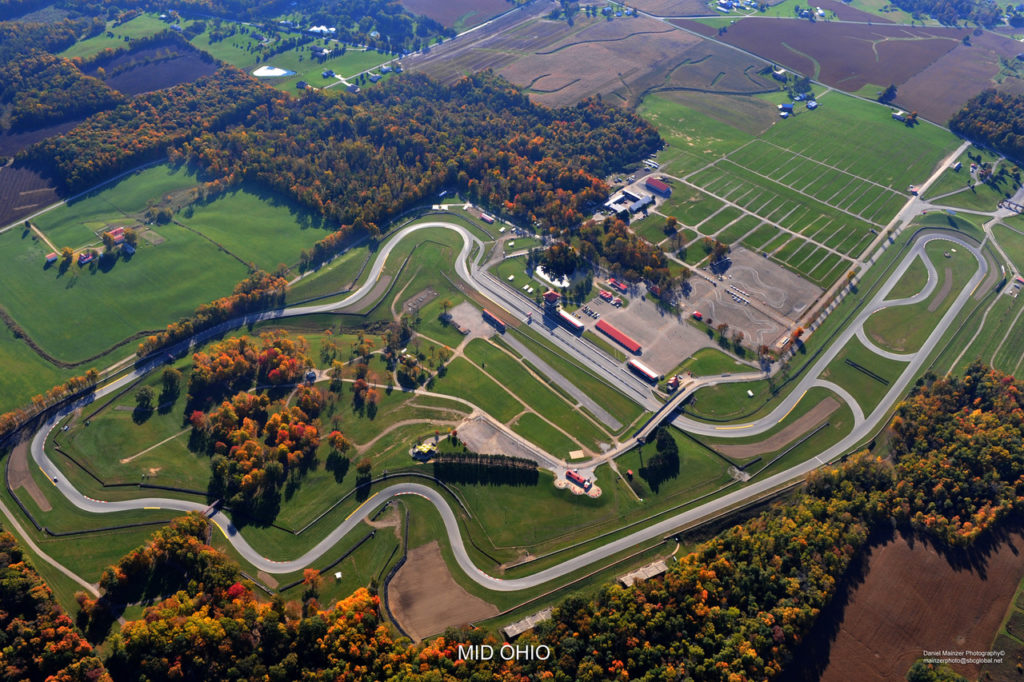
Mid Ohio 09 20×30, copyrite Daniel Mainzer
Your work is very masculine, discuss this is relations to cars and sport.
I wound up shooting automobile racing, mostly for the tire companies, because of my in housework doing this. Like all photographic specialties, there is much to learn and master about shooting racing, plus specialized equipment to do the best job. You need fast cameras, the best long lenses, technique and knowledge of race tracks and car characteristics. I still do a bit every year, even though I have mostly retired from shooting anything other than my own work.
Take one destination and photograph that has a charming story behind the photograph.

Parisian Young Man, copyrite Daniel Mainzer
I shot this photo in Paris and it shows a young man in training. We were just walking around the gardens outside the Louvre and this just happened. His mother yelled at him to come back, but he was possessed.
Contact:
Daniel Mainzer
mainzerphoto@sbcglobal.net
Deborah Blakeley, Melbourne, Australia
Interview by Deborah Blakeley, May 2020
Think a colleague or friend could benefit from this interview?
Knowledge is one of the biggest assets in any business. So why not forward this on to your friends and colleagues so they too can start taking advantage of the insightful information the artist has given?
Other artists you may be interested in:



